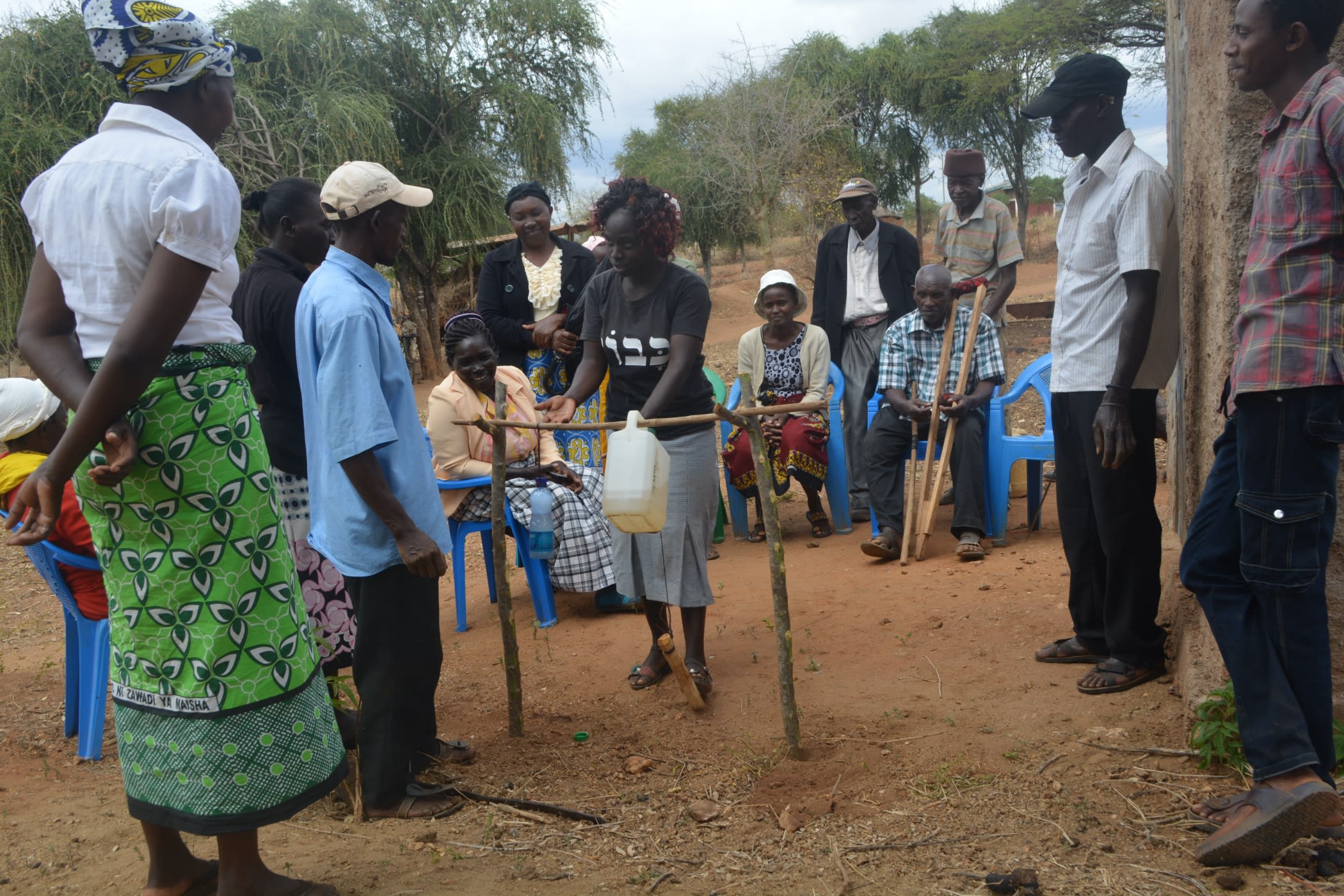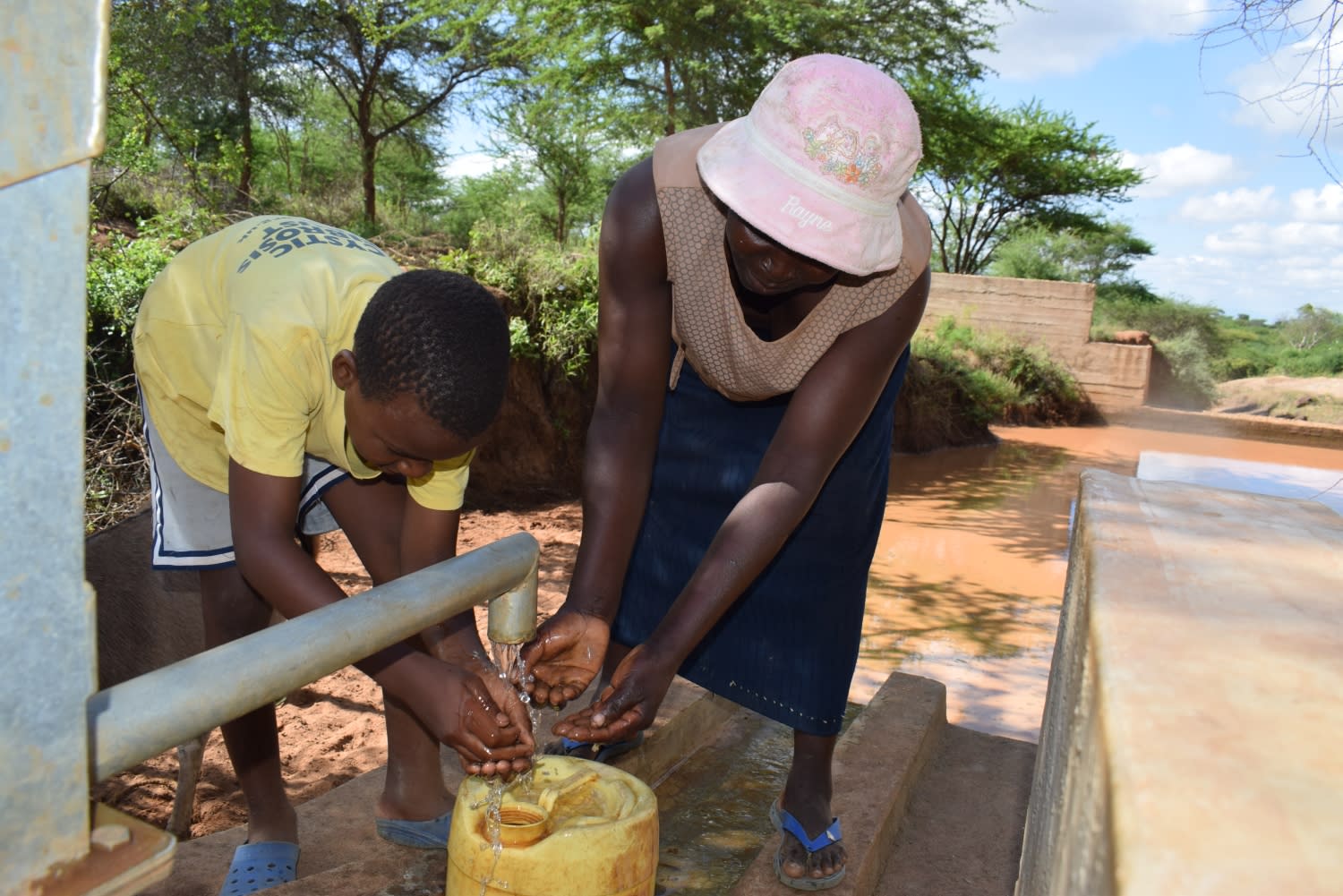Our main entry point into Kithuiya has been the Kyeni kya Ngungani Self-Help Group, which is comprised of 25 farming households that are working together to address water and food scarcity for the 337 people in their community. We will partner with this group on multiple projects for up to 5 years to improve water access in the region. These members will be our hands and feet in both constructing water projects and spreading the message of good hygiene and sanitation to everyone.
Kyeni kya Ngungani group members are found in a peaceful rural setting which is largely arid and dry with little vegetation cover. Most of the local members live in below average houses made of bricks and mud with the roofs being made of iron sheets or grass. The four main sources of income reported by group members are, small business ownership (16.7%), casual labor (25.0%), formal employment (16.7%), and farming 41.7%.
Access to water is a significant challenge in this community. Though farming was ranked the highest, people reported that the kind of farming that they do is mainly rain-fed because they have no other way to irrigate crops. That means when the rains fail, they have very little to depend on. For those who sell milk it is a similar challenge. They reported that the milk production usually reduces when the rains are bad due to lack of nutrition for the cows.
"Our community lacks a reliable water supply source. This has resulted in community members using water from scoop holes for drinking and cooking, which is not safe for human consumption," said Judith Muema.
People must walk more than a mile in search of water, prompting some of them to buy donkeys to help in fetching water. In fact, more than half of the group members reported that it takes more than 2 hours to travel to the water source, wait in line, fetch the water, and return home.
The current water source is found in a seasonal river channel which runs dry at certain times of the year. People rely on scoop holes which are open and accessible to wild animals and livestock, exposing them to a wide range of contaminants. The water looks somewhat discolored and is obviously not safe for human consumption. This leaves community members with further struggles in their quest to access water for use at the household level.
What we can do:
Hand-Dug Well
This particular hand-dug well is being built adjacent to this group’s ongoing sand dam project (click here to see), which will supply clean drinking water once it rains. We have supplied the group with the tools needed for excavation. With the guidance of our artisans and mechanics, the excavated well will be cased, sealed with a well pad, and then finished with a new AfriDev pump.
Excavation takes a month or more on average, depending on the nature of the rock beneath. Construction of the well lining and installation of the pump takes 12 days maximum. The well will be lined with a concrete wall including perforations so that once it rains, water will filter in from the sand dam.
This well will be located in Kithuiya Village, and will bring clean water closer to families having to walk long distances for their water.
Training
We will hold hygiene and sanitation training sessions with Kyeni kya Ngungani Self-Help Group, which are also open to non-members. These will teach about important hygiene practices and daily habits to establish in the community at the personal and household levels. Taking good care of self and environment will make for a healthy community.
"Due to lack of enough water, the levels of hygiene and sanitation are low as the available water is too little for intensive cleaning activities and is not restricted to basic activities," said Mrs. Muema.
Most households have latrines, but they are built with unstable mud floors and lack handwashing stations for people to clean their hands after going to the bathroom. There is a need for improvement on compound hygiene, effective water treatment methods, handwashing training, soap making lessons and knowledge of disease transmission routes. The members of this group seem to have little knowledge of hygiene and sanitation. This also exposes them to risks of contracting diseases such as cholera, typhoid, diarrhea, and stomachaches.

 Protected Dug Well
Protected Dug Well
 Rehabilitation Project
Rehabilitation Project






























